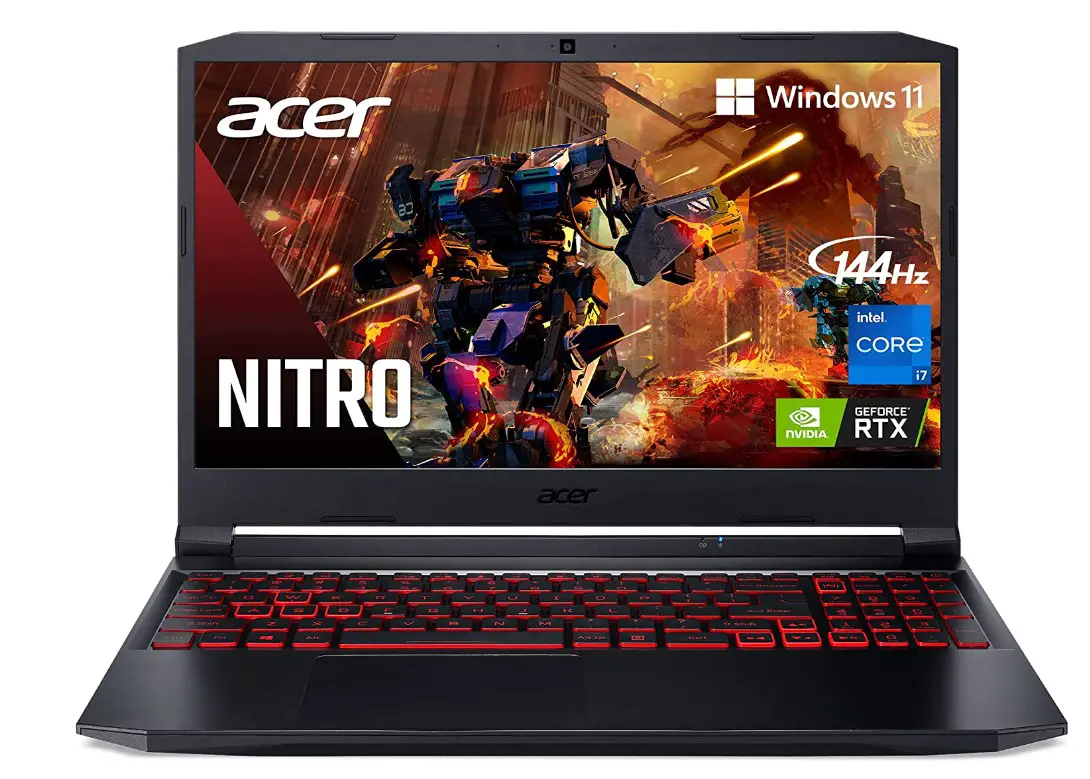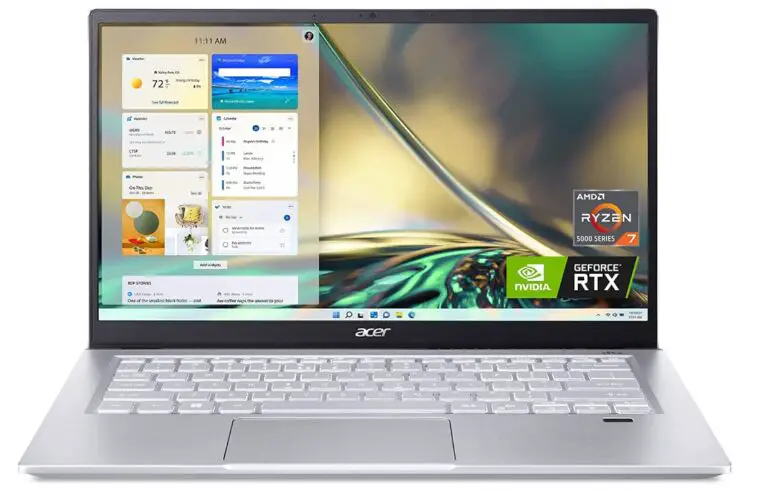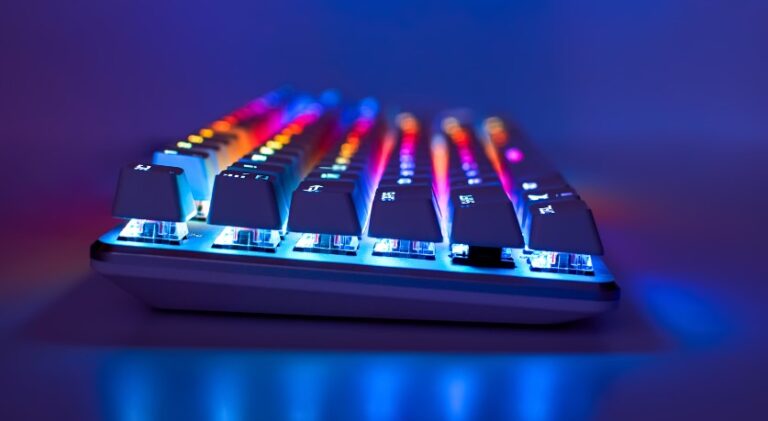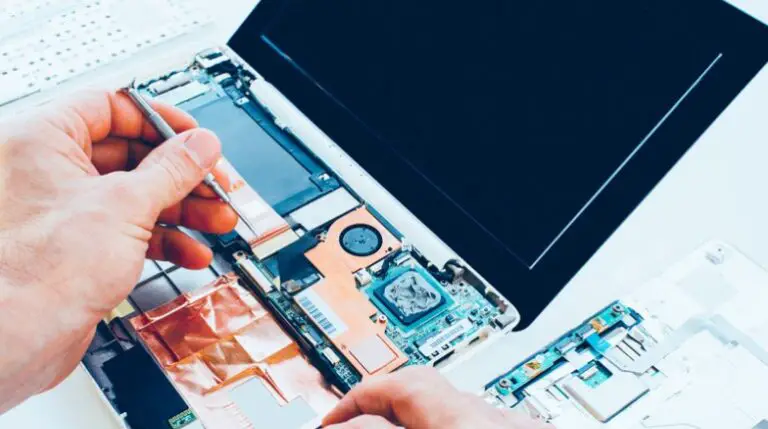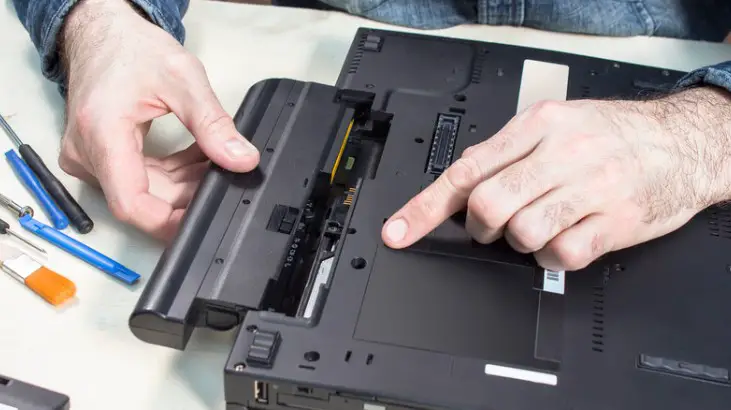Best Laptops For Virtualization
Virtualization has become an essential aspect of modern computing, allowing users to run multiple operating systems and applications on a single device. Whether you’re a software developer or IT professional, finding the right laptop for virtualization can be challenging.
With so many options available in the market, it’s important to choose a machine that can handle complex workloads without compromising performance. In this article, we’ll explore some of the best laptops for virtualization that are currently available on the market.
We’ll take a closer look at each device’s specifications, features, and performance capabilities to help you make an informed decision about which one is right for your needs. From powerful processors to ample storage space, we’ve got all the information you need to find the perfect laptop for your virtualization needs.
So let’s dive in.
Key Factors To Consider For Virtualization
If you are looking for a laptop that can handle virtualization, there are a few key factors to consider.
First and foremost, hardware requirements should be at the top of your list. Virtual machines require significant resources from your computer, so having enough processing power, memory, and storage is crucial.
In addition to hardware requirements, software compatibility is also an important consideration. Not all virtualization software works with every operating system or version, so it’s essential to do some research before making a purchase.
Lastly, network capabilities play an integral role in virtualization. Make sure your laptop has fast and reliable Wi-Fi or Ethernet connectivity to ensure smooth operation when running multiple virtual machines simultaneously.
With these factors in mind, you’ll have a better idea of what kind of laptop will work best for your needs as a virtualization user.
When it comes to laptops built for virtualization, processor power is undoubtedly the backbone of performance. In the next section, we’ll explore why this component is particularly critical and how you can determine which processors offer optimal speed and efficiency for running multiple VMs on your device.
Processor Power: The Backbone Of Virtualization
After considering the key factors for virtualization, you might think that choosing the right hardware would be a walk in the park. Well, I hate to break it to you, but this isn’t always the case. While processor power is undoubtedly essential, there are other hardware requirements that must also be met.
Let’s start with processor power: the backbone of virtualization. When it comes to running multiple operating systems simultaneously on one machine, having a powerful CPU can make all the difference.
Performance benchmarks have shown that Intel Core i7 and i9 processors are currently some of the best options available for virtualization tasks. However, don’t overlook AMD Ryzen processors as they offer similar performance at a lower price point. Ultimately, regardless of which brand or model you choose, ensure that your chosen processor meets or exceeds your software’s recommended specifications.
Ram: The More, The Merrier
When it comes to virtualization, having high RAM is essential. With more RAM, your laptop can handle multiple operating systems and applications running simultaneously without any lag or delay. The benefits of high RAM are numerous – from faster performance to smoother multitasking.
However, there’s a cost vs performance tradeoff when it comes to choosing how much RAM you need for virtualization. While it may be tempting to go all out and get as much RAM as possible, this can quickly become an expensive endeavor. It’s important to balance your budget with your needs and choose a laptop with enough RAM that will allow you to run your virtual machines without any bottlenecks in performance.
Future-proofing is also something else worth considering; investing in higher memory now could potentially save you money down the line if you plan on using your laptop for several years.
In addition, don’t skimp on capacity when it comes to storage space. In fact, having ample storage space is just as critical as having sufficient RAM.
Storage Space: Don’t Skimp On Capacity
RAM may be important for virtualization, but storage space is just as crucial. After all, you need to store the operating system and applications that will run on your virtual machines.
While some may assume they can skimp on capacity by relying solely on cloud options or external drives, it’s important to consider the pros and cons of each option.
Cloud storage is convenient because it allows you to access your files from anywhere with an internet connection. However, relying solely on cloud options can lead to slower performance if you have a poor internet connection.
External drives offer more control over your data and faster transfer speeds, but they require physical maintenance and can become damaged or lost. Additionally, choosing between solid-state drive (SSD) or hard disk drive (HDD) storage can also impact performance and price point. SSDs are faster and more expensive while HDDs are slower but less expensive. Ultimately, it’s up to personal preference and budget when deciding which option works best for your needs.
Consider the type of workloads you’ll be running on your virtual machines before selecting a storage option.
Evaluate whether speed or cost is more important for your use case.
Keep in mind that cloud options rely heavily on internet connectivity.
Research different types of external drives such as portable vs desktop models.
Check for compatibility with your laptop before purchasing any additional storage solutions.
Now that we’ve covered the importance of having adequate storage space when using virtualization software, let’s move on to another key aspect: display quality. A clear view of your virtual machines not only enhances productivity but also reduces eye strain during long sessions.
Display: A Clear View Of Your Virtual Machines
When it comes to virtualization, having a clear and high-quality display is crucial. You want to be able to see every detail of your virtual machines without any lag or blurriness. Display quality is determined by factors such as resolution, color accuracy, and contrast ratio. The higher these specs are, the better your visual experience will be.
Screen size also plays a significant role in virtualization. A larger screen allows you to have multiple virtual machines open simultaneously and gives you more space for multitasking. However, keep in mind that a bigger screen can come at the cost of portability. So if you plan on taking your laptop with you often, consider getting one with a smaller screen size.
Additionally, the refresh rate is another important aspect of display quality that should not be overlooked. It determines how many times per second the image on your screen updates. A higher refresh rate means smoother visuals and less strain on your eyes during extended periods of use.
Moving forward into battery life: keep your work going…
Battery Life: Keep Your Work Going
As virtualization requires a lot of power, longevity versus power is always an issue when it comes to laptop batteries. The longer the battery life, the more likely you can work without worrying about charging on the go. On the other hand, if you need more processing power for your tasks, then a shorter battery life may be inevitable. However, with advancements in technology and better energy management systems being implemented into laptops every year, there are ways to ensure that you get both.
Here are three battery-saving tips that will help extend your laptop’s battery life:
- Adjust screen brightness – Reducing screen brightness when working indoors or at night saves significant amounts of power.
- Turn off Wi-Fi/Bluetooth – When not using wireless connections like Wi-Fi or Bluetooth, turning them off can conserve precious battery life.
- Use Power Saving mode – Most operating systems have built-in power-saving modes that reduce performance slightly but extend battery life significantly.
With these simple adjustments in mind, keeping your laptop charged throughout the day should no longer be a concern.
Now let’s dive into how portability plays a crucial role in choosing the best laptop for virtualization.
Portability: Easy To Carry, Easy To Work
Now that we’ve covered how to keep your work going with a laptop’s battery life, let’s talk about the importance of portability.
When it comes to virtualization, size considerations, and design preferences can greatly impact your experience.
Whether you’re constantly on the go or working from home, having a laptop that is easy to carry and use is essential.
For those who value mobility above all else, weight limits should also be taken into account when choosing a laptop for virtualization.
A lightweight device will allow you to easily transport your machine without sacrificing performance.
However, if you prefer larger screens or more powerful hardware options, then you may need to compromise on weight.
Ultimately, finding the right balance between these factors will depend on your specific needs and priorities when it comes to virtualization on the go.
As important as portability is for laptops used in virtualization, compatibility with various software applications and operating systems is equally crucial.
Ensuring smooth virtualization requires careful consideration of your chosen hardware and software components.
In our next section, we’ll dive deeper into this topic and explore what steps are necessary to ensure that everything works seamlessly together.
Compatibility: Ensuring Smooth Virtualization
When it comes to virtualization, hardware requirements, and software compatibility are of utmost importance. Without the right components, your virtual machine may run slowly or not at all. Before starting any virtualization project, research the specific requirements for the software you plan on using.
Check that your computer has enough processing power, memory, and storage space to accommodate both the host OS and any guest operating systems. In addition to meeting minimum hardware requirements, optimizing performance is also crucial for smooth virtualization.
One way to do this is by allocating adequate resources to each virtual machine. This can be done through settings in your chosen hypervisor software. Another important factor is ensuring that your host OS and other applications running simultaneously are not resource-intensive themselves as they could hog up valuable system resources needed for optimal virtualization performance.
To ensure compatibility and optimize performance when setting up a virtual machine, keep these points in mind:
- Research hardware requirements for your chosen hypervisor
- Allocate sufficient resources to each VM
- Avoid running resource-intensive applications alongside your VMs
- Consider using solid-state drives (SSDs) for improved performance
Top Laptops For Virtualization: Our Picks
Dell’s XPS 15 is a great choice for virtualization, offering powerful performance and a sleek design.
The Lenovo ThinkPad X1 Extreme Gen 2 is another great option, boasting a long battery life and great portability.
Dell Xps 15
If you are looking for a powerful laptop that can handle virtualization tasks with ease, the Dell XPS 15 should definitely be on your radar.
This sleek piece of tech artistry combines a stunning design with top-notch performance, making it a standout choice for anyone diving into the world of virtualization. You’ll be hard-pressed to find another laptop that can keep up with the XPS 15’s impressive capabilities.
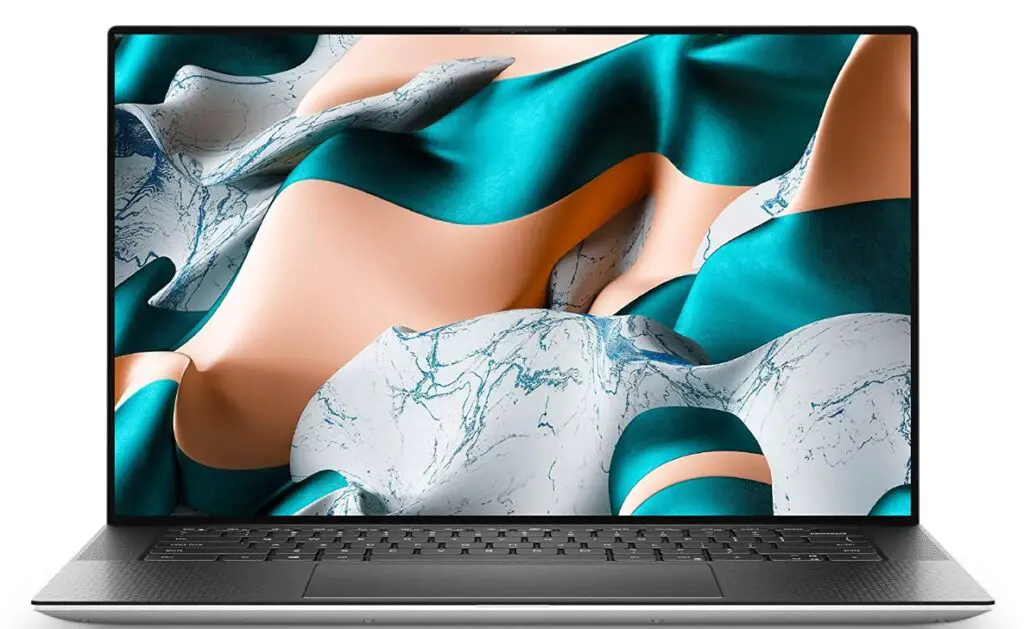
The Dell XPS 15 boasts a 62% larger touchpad, 5% larger screen, and a 5.6% smaller footprint, giving you more screen real estate and a comfortable working space. Its 16:10 FHD+ edge-to-edge display, equipped with DisplayHDR 400 and Dolby Vision, ensures a jaw-dropping visual experience. Meanwhile, the integrated Eyesafe display technology reduces harmful blue light emissions, keeping your eyes comfortable during those long hours of virtualization work.
But it’s not just about the visuals. The Dell XPS 15’s quad speaker design with Waves Nx audio will make your ears perk up and take notice. High-polished diamond-cut sidewalls add a touch of elegance to the overall design, making you the envy of your colleagues. What we love the most about this laptop is its ability to handle multiple virtual machines without breaking a sweat, all while maintaining a slim and stylish profile.
Let’s break down some of the key features and benefits you’ll enjoy with the Dell XPS 15:
- 62% larger touchpad: More room for smooth and precise navigation
- 5% larger screen: Improved multitasking and an immersive viewing experience
- 16:10 FHD+ edge-to-edge display: Sharp and vibrant visuals with DisplayHDR 400 and Dolby Vision
- Integrated Eyesafe display technology: Reduced blue light emissions for comfortable long-term use
Pros:
- Powerful performance for virtualization tasks
- Stunning display with HDR and Dolby Vision support
- Excellent audio quality with quad speaker design
- Slim, stylish design with high-polished diamond-cut sidewalls
Cons:
- Premium price tag
- Potential thermal throttling under heavy workloads
- Limited upgrade options due to soldered components
Latest Lenovo ThinkPad X1 Carbon Gen 9 Ultrabook Laptop
Now that we’ve covered the impressive performance of the Dell XPS 15, let’s take a look at another top contender for virtualization tasks: the Latest Lenovo ThinkPad X1 Carbon Gen 9 Ultrabook Laptop.
With its powerful performance, sleek design, and impressive battery life, this laptop will make you wonder how you ever managed without it. Trust us, the X1 Carbon Gen 9 is worth every penny for those serious about virtualization.
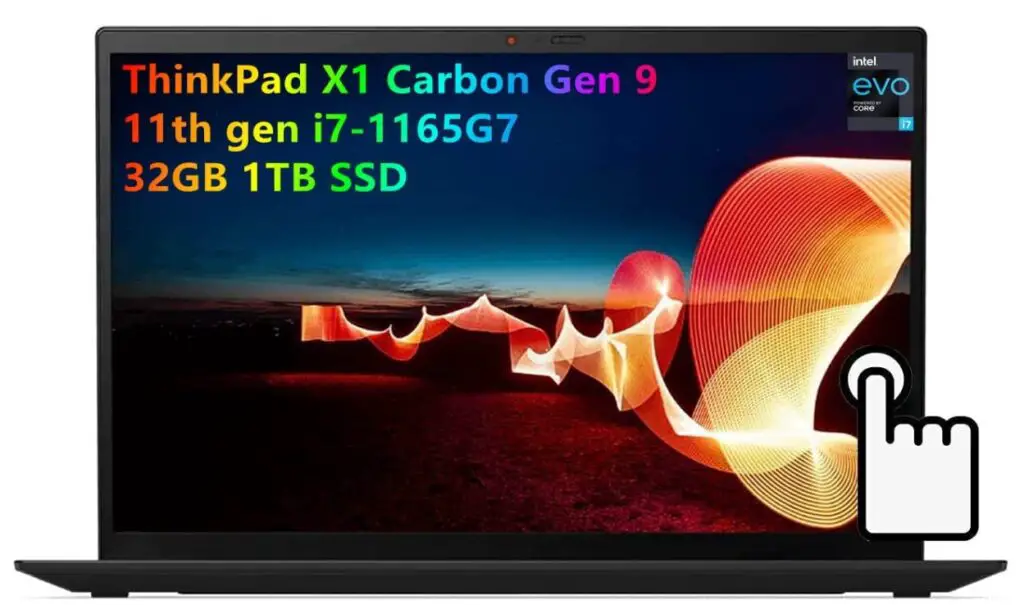
This Ultrabook is equipped with an 11th Gen Intel Core i7-1165G7 processor, ensuring smooth multitasking and fast performance. The 32 GB of LPDDR4x 4266MHz memory (soldered) and 1 TB PCIe SSD storage provide ample room for running multiple virtual machines. The stunning 14″ 16:10 FHD+ IPS touchscreen display, with its anti-glare and low-power features, makes working on virtual environments a visual treat.
What sets the X1 Carbon Gen 9 apart is its incredible battery life, clocking in at up to 16.7 hours. This means you can keep working on your virtual machines without constantly searching for a power outlet. We absolutely love the lightweight design (just 0.59 inches thick) combined with the robust build quality, making it the perfect companion for professionals on the go.
Let’s dive into some of the key features and benefits of the Lenovo ThinkPad X1 Carbon Gen 9 Ultrabook:
- 11th Gen Intel Core i7-1165G7 processor: Top-notch performance for virtualization tasks
- 32 GB LPDDR4x 4266MHz memory: Ample memory for running multiple VMs
- 1 TB PCIe SSD storage: Fast and spacious storage for your virtual environments
- 14″ 16:10 FHD+ IPS touchscreen display: Crisp, clear visuals with 100% sRGB color gamut
Pros:
- Powerful performance for virtualization
- Sleek and lightweight design with robust build quality
- Impressive battery life, up to 16.7 hours
- Stunning 16:10 FHD+ touchscreen display
Cons:
- Premium price point
- Soldered memory limits upgrade options
- Limited AimCare support to just 1 week
NewHP Spectre x360 2-in-1 Convertible Ultrabook Laptop
Meet the New HP Spectre x360 2-in-1 Convertible Ultrabook Laptop, the ideal companion for all your virtualization needs. This powerhouse of a laptop beautifully combines performance and versatility, making it a must-have for professionals and enthusiasts alike.
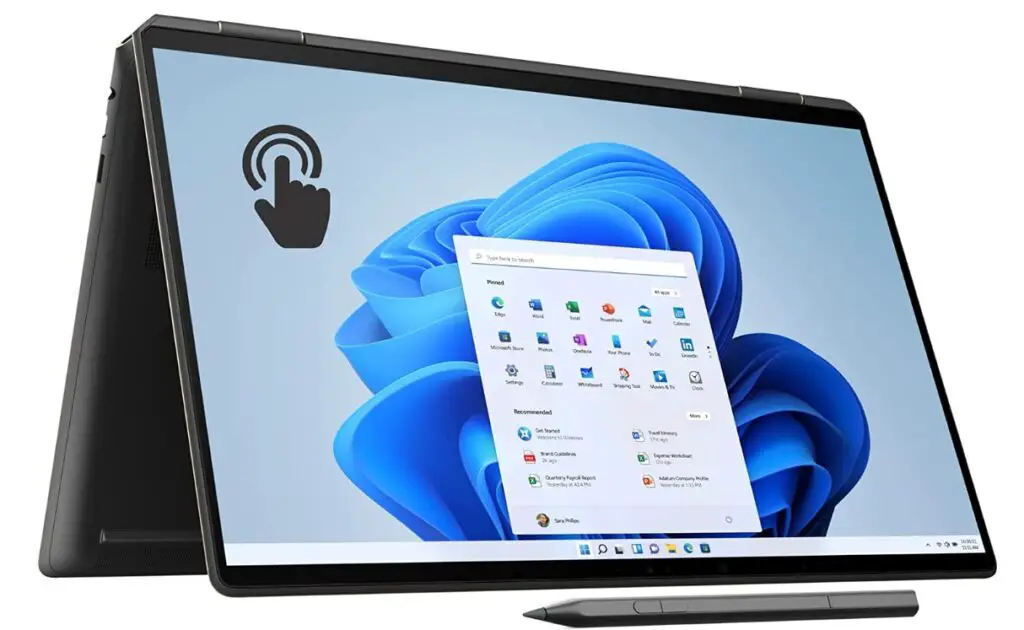
Packed with an Intel Core i7-11390H processor and 16 GB DDR4-3200 MHz RAM, the Spectre x360 delivers lightning-fast performance for running multiple virtual machines. The 16″ 3K+ multitouch-enabled IPS display with low blue light and 400 nits brightness ensures a comfortable and immersive viewing experience. Additionally, the 1 TB PCIe NVMe M.2 SSD provides ample storage for all your virtual environments and the Windows 11 Home operating system brings the latest features to your fingertips.
Our favorite thing about the HP Spectre x360 is its 2-in-1 convertible design, which allows you to seamlessly switch between laptop and tablet modes. The backlit keyboard, fingerprint reader, and webcam add to its functionality, while Intel Wi-Fi 6 AX 201 and Bluetooth 5 combo with Gigabit file transfer speeds make connectivity a breeze. The array of external ports, including Thunderbolt 4, USB Type-A, HDMI 2.0b, and more, ensures you have all the connections you need.
Key features and benefits of the HP Spectre x360 2-in-1 Convertible Ultrabook Laptop:
- Intel Core i7-11390H Processor: Powerful performance for running multiple virtual machines
- 16 GB DDR4-3200 MHz RAM: Smooth multitasking and quick access to your applications
- 16″ 3K+ multitouch-enabled IPS display: Stunning visuals and comfortable viewing experience
- 1 TB PCIe NVMe M.2 SSD: Ample storage for all your virtual environments
Pros:
- High-performance processor and memory for virtualization
- 2-in-1 convertible design for versatility
- Impressive 3K+ multitouch-enabled display
- Comprehensive range of connectivity options
Cons:
- Onboard RAM limits upgrade options
- Premium price point
- Windows 11 Home may be less suited for some business users
Microsoft New Surface Pro 7 Bundle
The Microsoft New Surface Pro 7 Bundle is a laptop that means business. If you’re in the market for a machine that can handle virtualization like a pro, then look no further.
This sleek machine packs a punch when it comes to performance, thanks to its top-notch features. Let’s dive in and explore what makes this bundle the best choice for those who need a laptop that can handle virtualization like a pro.
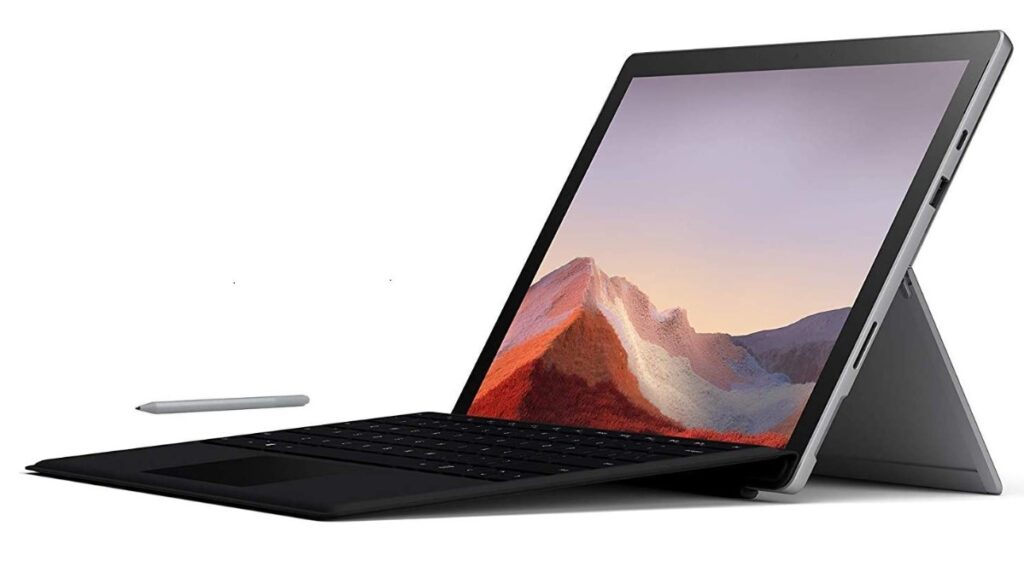
First off, the 10th Generation Intel Core i5-1035G4 processor ensures that your virtual machines run smoothly, without lag or hiccups. The 12.3″ Touchscreen PixelSense (2736×1824) display provides crisp visuals, making it easy to manage multiple windows and programs simultaneously. With a 256GB Solid State Drive and 8GB LPDDR4x RAM, you can expect lightning-fast boot times and smooth multitasking, even when running resource-intensive applications.
The Intel Wi-Fi 6 (2×2/160) Gig+ with Bluetooth 5.0 ensures that you stay connected, whether you’re working remotely or accessing virtual machines in the cloud. The bundle also includes a Black Type Cover Keyboard and Surface Pen, which are perfect for taking notes and sketching ideas on the fly. The memory storage capacity of 128.0 adds even more value to this already impressive package.
A few standout features and their benefits include:
- 10th Generation Intel Core i5-1035G4 processor: The powerful processor guarantees efficient virtualization and multitasking.
- 12.3″ Touchscreen PixelSense Display: High-resolution display improves productivity by making it easier to manage multiple windows.
- 256GB Solid State Drive and 8GB LPDDR4x RAM: Allows for fast boot times and seamless multitasking.
- Black Type Cover Keyboard and Surface Pen: Enhances creativity and note-taking on the go.
What I love most about the Microsoft New Surface Pro 7 Bundle is its versatility, making it perfect for both work and play. However, no product is without its flaws.
Pros:
- Powerful processor for virtualization and multitasking
- High-resolution touchscreen display
- Fast boot times and seamless multitasking
- Includes keyboard and Surface Pen
Cons:
- Slightly heavier than previous Surface models
- Limited port selection
- Battery life could be better
Acer Nitro 5 AN515-57-79TD Laptop
The Acer Nitro 5 AN515-57-79TD Gaming Laptop is here to blow your mind. Designed for gamers and virtualization enthusiasts alike, this powerhouse of a machine combines an 11th Gen Intel Core i7-11800H processor with an NVIDIA GeForce RTX 3050 Ti graphics card to deliver a flawless gaming experience. With its 15.6″ Full HD LED-backlit IPS display boasting a 144Hz refresh rate, you’ll be fully immersed in the action, wondering how you ever managed without it.
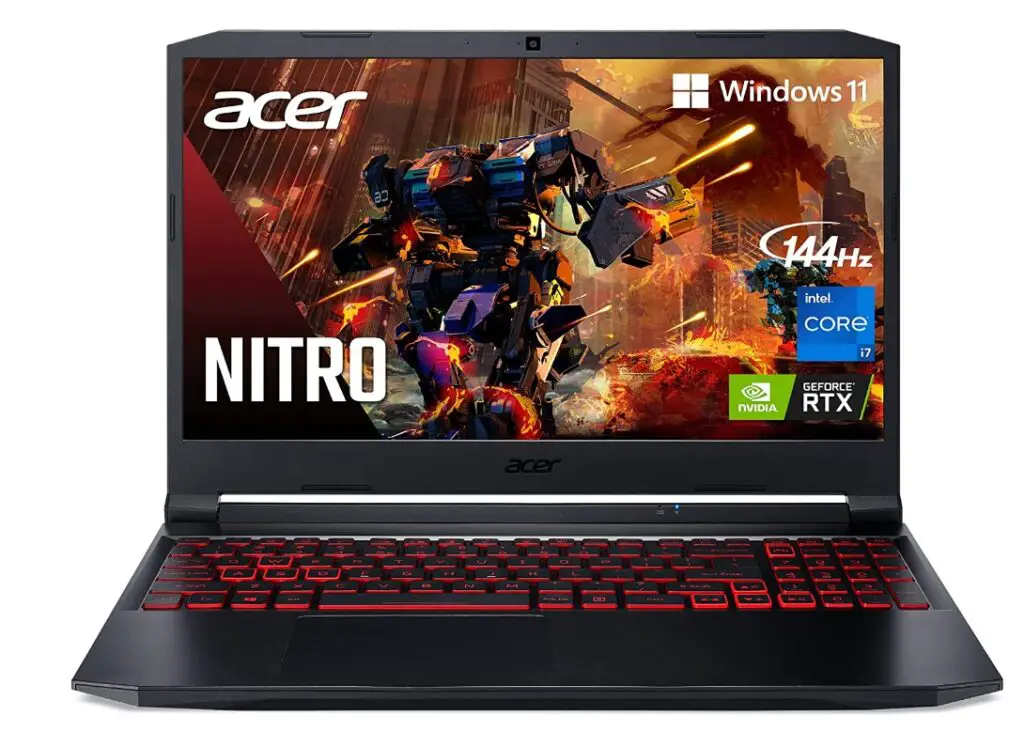
As you dive deeper into virtual worlds, the Acer Nitro 5 has you covered with its 8GB DDR4 3200MHz Memory and 512GB NVMe SSD. Need more space? No problem—the expandable storage options ensure you never run out of room for your favorite games and applications. And let’s not forget the Killer DoubleShot Pro feature, which allows simultaneous Wi-Fi and Ethernet connectivity for optimal traffic control and reduced latency.
When it comes to comfort, Acer’s CoolBoost technology increases fan speed and cooling capabilities, ensuring your laptop stays cool during those intense gaming sessions. The NitroSense UI, accessible with a dedicated button, allows for real-time monitoring of your laptop’s performance, ensuring you’re always in the know about your hardware’s capabilities.
Here’s a quick recap of the key features:
- 11th Gen Intel Core i7-11800H processor: unrivaled gaming performance
- NVIDIA GeForce RTX 3050 Ti graphics: jaw-dropping visuals
- Expandable storage options: customize to your heart’s content
- Acer CoolBoost & NitroSense UI: stay cool and informed
What I love most about this product: the seamless combination of raw power and advanced cooling technology, ensuring uninterrupted gameplay without breaking a sweat.
Pros:
- Blazing-fast 11th Gen Intel Core i7 processor
- NVIDIA GeForce RTX 3050 Ti graphics for stunning visuals
- Killer DoubleShot Pro for prioritized traffic control
- Acer CoolBoost technology for optimal gaming comfort
Cons:
- 8GB RAM may be limiting for some users
- Some might find the design too aggressive
- Battery life could be better during high-performance tasks
Take away: Choosing The Perfect Laptop For Your Virtualization Needs
Are you ready to take control of your virtualization needs? With the right laptop, you can easily run multiple operating systems and applications simultaneously without a hitch. But with so many options out there, it can be overwhelming to choose which one is perfect for you. Don’t worry. We’ve got you covered with some tips on performance vs price, gaming laptops vs business laptops, and even Macbooks for virtualization.
When considering performance vs price, it’s important to find the sweet spot that balances both aspects. You don’t want to overspend on the power that you won’t use or underspend and end up with a slow machine.
Gaming laptops offer high-end specs but come at a premium price point while business laptops provide reliability and security features necessary for professional environments. If budget isn’t an issue, aim for a laptop with an Intel Core i7 processor or higher paired with 16GB RAM and a dedicated graphics card for optimal virtualization experience.
As for Macbooks for virtualization, they’re certainly capable of running any hypervisor software like Parallels Desktop or VMware Fusion smoothly due to their powerful hardware components such as solid-state drives and fast processors. However, keep in mind that Apple products are often priced higher than their Windows counterparts despite having similar specifications.
Ultimately, it all boils down to personal preference between macOS or Windows operating systems when using virtual machines extensively. So take charge of your virtual environment today by choosing the perfect laptop that suits your needs best.
Also read: Best Laptop for Remote Work
Conclusion
In conclusion, finding the perfect laptop for virtualization can be a daunting task. It’s important to consider key factors such as processor power, RAM, storage space, display quality, portability and compatibility.
After thorough research and analysis, we’ve compiled a list of top laptops that meet these requirements.
Whether you’re a developer or IT professional looking to create multiple test environments or simply someone who enjoys running several operating systems simultaneously, there’s something on our list for everyone.
From the powerful Dell XPS 15 to the sleek MacBook Pro with M1 chip, each laptop has its unique features and capabilities to enhance your virtualization experience.
In today’s fast-paced world where remote work has become more prevalent than ever before, having a reliable laptop that can handle virtualization is essential. So why settle for less when you can have the best? Invest in one of our top picks and take your virtual machine game up a notch.

